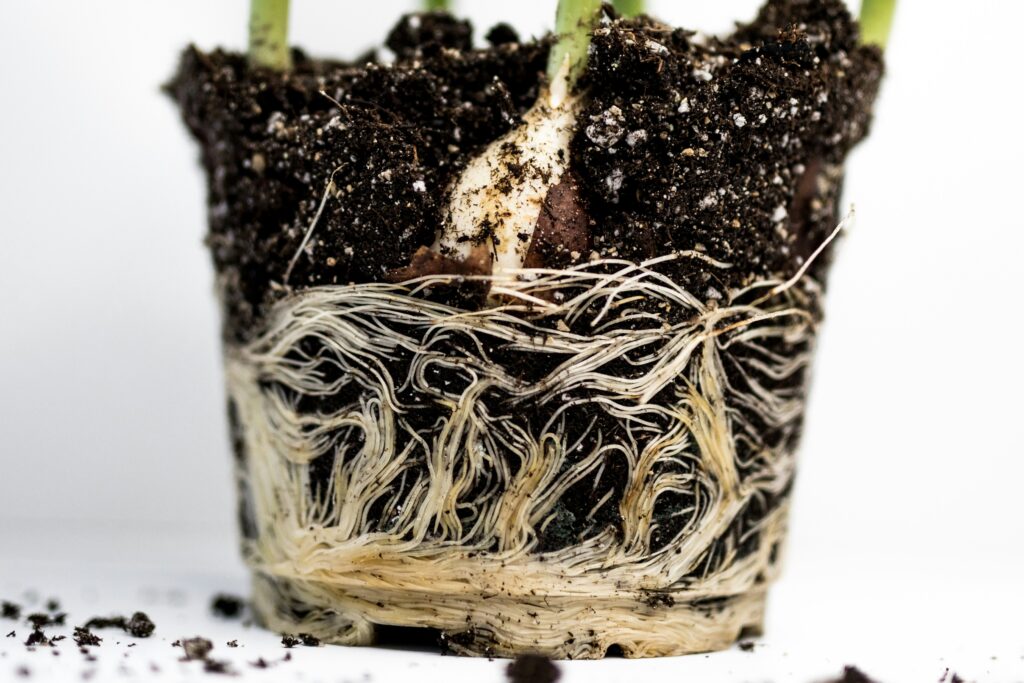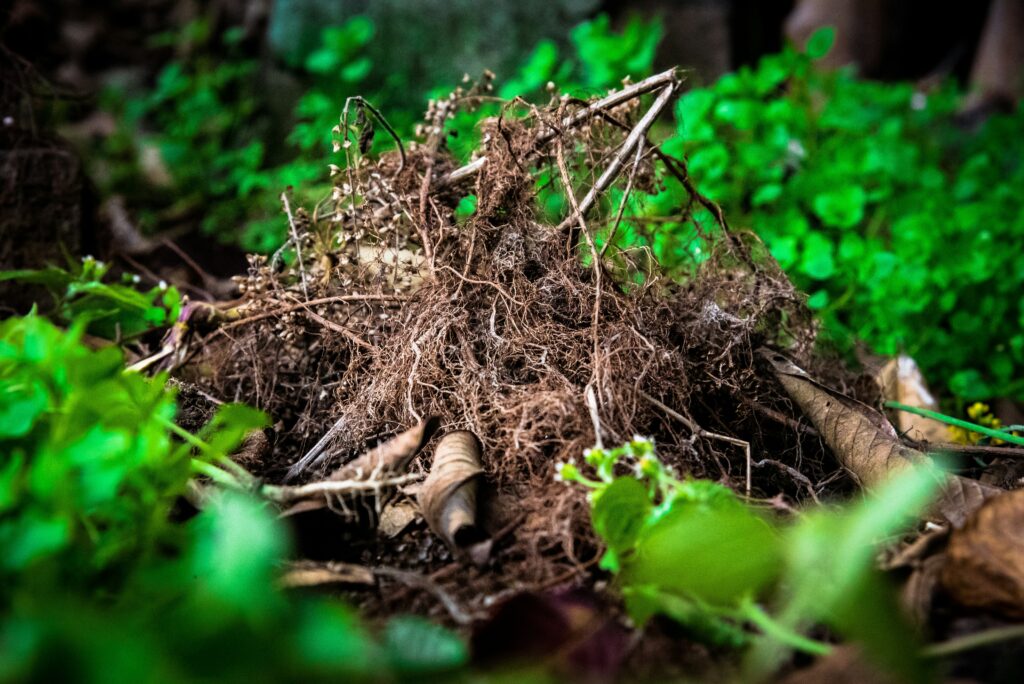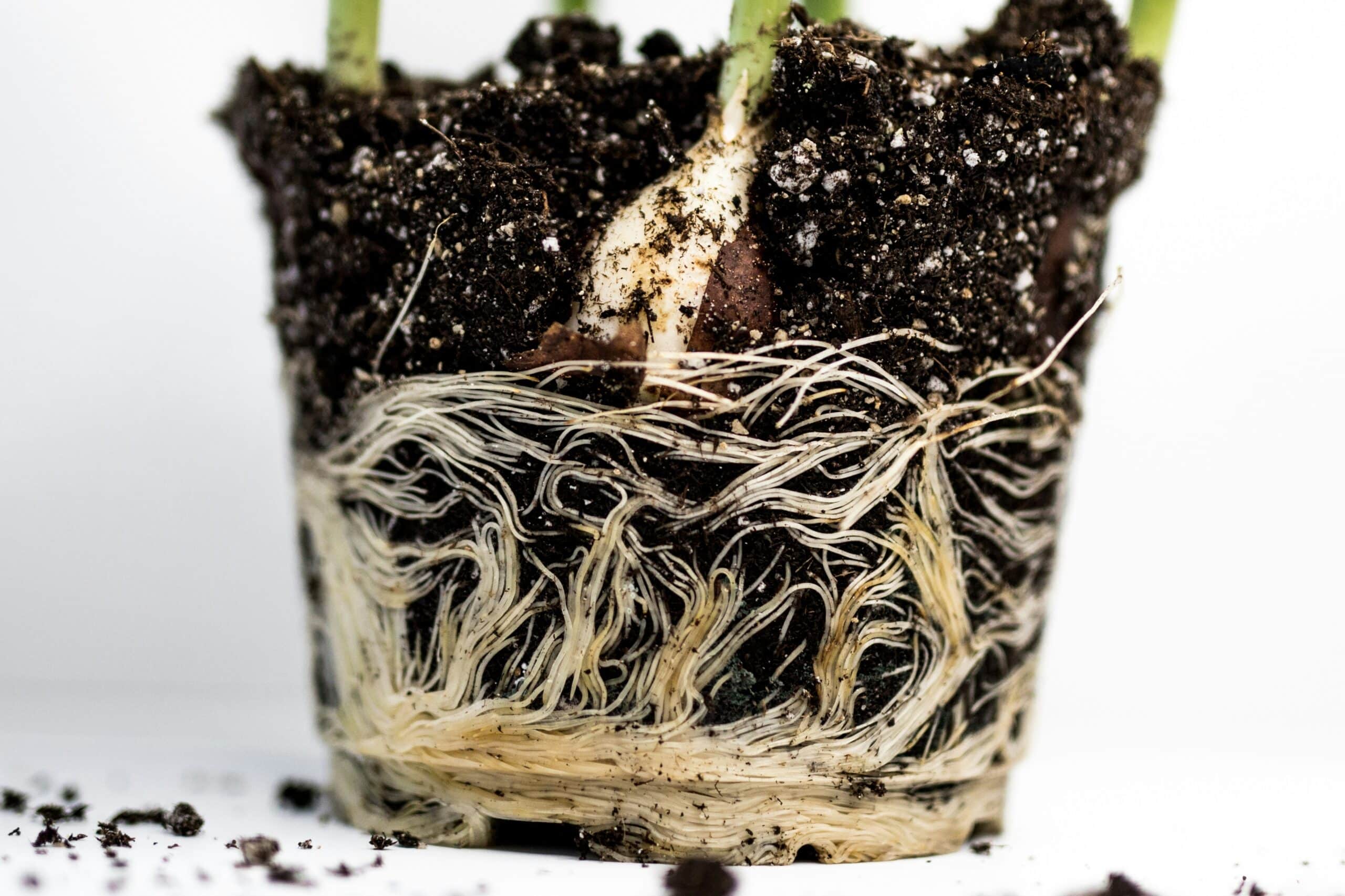Anúncios
In this comprehensive guide, learn to navigate the murky waters of plant diseases, specifically focusing on root rot. From recognizing early symptoms to expert-backed advice on prevention and treatment, this is a must-read for every container gardener striving for healthier, thriving plants.

Root rot is a common yet preventable ailment that can cripple the hardiest of plants if left unchecked. Understanding its causes, signs, and effective countermeasures are crucial to maintaining a vibrant container garden. This guide delves deep into these aspects, leveraging expert insights and practical tips to equip you with everything needed to combat root rot effectively.
Anúncios
Rounding off with a discussion on the importance of regular care and maintenance in ensuring plant health, this guide serves as a comprehensive resource for container gardeners. The aim is to cultivate not just green thumbs but also a deeper understanding and appreciation of the intricacies of plant care. So, gear up to embark on a journey towards healthier, happier plants. 🌿🌻
Understanding Root Rot
Root rot is a common disease that afflicts container plants. In essence, it is a condition where the roots of a plant become diseased, often turning brown or black and becoming mushy. This can be caused by a variety of factors, including overwatering, poor drainage, and the presence of certain types of fungi. If left untreated, root rot can cause a plant to wilt, lose leaves, or even die.
Anúncios
The Science Behind Root Rot
Root rot is primarily caused by two types of fungi: Phytophthora and Pythium. These fungi thrive in environments with excessive moisture and inadequate air circulation, both of which can be common in container plants. When these conditions are present, the fungi can invade the plant’s root system, causing decay and inhibiting the plant’s ability to absorb water and nutrients.
Recognizing Root Rot
Early detection of root rot is essential for rescuing affected plants. The most common symptoms include wilting leaves, stunted growth, and a general decline in the plant’s health. Upon closer inspection, the roots may appear brown or black and feel soft or slimy. In severe cases, the plant may exhibit a foul smell.
Identifying Different Types of Root Rot
Different types of root rot can present slightly different symptoms. For example, Phytophthora root rot often causes a reddish discoloration in the roots, while Pythium root rot is more likely to result in a black or brown discoloration. Understanding these differences can help gardeners tailor their treatment strategies.
Treating Root Rot
Root rot is a serious and potentially fatal condition that affects a wide range of plants, particularly those grown in containers with poor drainage or overly saturated soil. It is typically caused by soilborne fungi or water molds, such as Phytophthora, Pythium, Rhizoctonia, and Fusarium, which thrive in moist, oxygen-deprived environments. Once these pathogens infect the plant’s roots, they begin to decay the root tissue, impairing the plant’s ability to absorb water and nutrients, ultimately leading to wilting, yellowing leaves, stunted growth, and in severe cases, death.
When root rot is suspected—often identified by brown, mushy, and foul-smelling roots—it is critical to act quickly and decisively to save the plant and prevent further spread of the infection.
Step-by-Step Treatment Process:
- Remove the Plant from Its Container
Gently remove the affected plant from its pot, being careful not to cause further stress or damage to the roots. If the soil is soggy or smells sour, discard it immediately, as it likely harbors the fungal pathogens responsible for the rot. - Inspect and Prune the Roots
Examine the root system closely and use a sterile pair of pruning shears or scissors to trim away all visibly rotted, discolored, or mushy roots. Healthy roots are typically white or light tan and firm to the touch. Be thorough, but cautious—not all roots may be salvageable, but removing the diseased portions is crucial for recovery. - Disinfect the Tools
After pruning, be sure to disinfect your tools with rubbing alcohol or a diluted bleach solution to avoid spreading the fungus to other plants. - Repot in Fresh, Well-Draining Soil
Replant the trimmed and treated specimen into a clean container with fresh, sterile potting mix that promotes good drainage and aeration. Consider using a soil blend that includes perlite, vermiculite, or coarse sand, which helps prevent waterlogging. - Improve Drainage Conditions
Ensure that the new pot has adequate drainage holes. You can also add a layer of gravel or small stones at the bottom to enhance water flow and prevent future saturation issues. - Apply Fungicides if Necessary
If the infection was severe, or if you’re treating multiple plants in the same area, consider applying a fungicide to kill any remaining spores and prevent reinfection.
Choosing the Right Fungicides
Fungicides are chemical or biological agents formulated to kill or inhibit the growth of fungal pathogens. When used correctly, they can be a valuable tool in managing root rot, especially in persistent or widespread cases. However, it’s essential to select the appropriate fungicide based on the specific type of fungus involved and the type of plant being treated.
Understanding Fungicide Options:
- Systemic Fungicides: These are absorbed by the plant and transported throughout its tissues, offering internal protection against fungal pathogens. They are ideal for treating root rot because they can target fungi that are embedded deep within the plant.
- Contact Fungicides: These remain on the surface of the plant and are used more for prevention or surface-level infections. While useful in some cases, they may not reach the infected roots effectively.
Recommended Fungicidal Ingredients:
- Mefenoxam (commonly found in products like Subdue Maxx):
Highly effective against Pythium and Phytophthora, two common water mold fungi responsible for root rot in many ornamental and edible plants. Mefenoxam works systemically and provides long-lasting protection when applied according to label directions. - Fosetyl-Al (commonly sold as Aliette):
Also effective against root rot caused by oomycetes such as Phytophthora. It works by stimulating the plant’s natural defense mechanisms and is particularly useful for crops like citrus, avocados, and ornamentals. - Propamocarb:
Another systemic fungicide, often used in combination with other active ingredients. It is effective in treating root and stem rots in vegetables and bedding plants. - Copper-based Fungicides:
While not as targeted as systemic treatments, copper compounds like copper sulfate or copper oxychloride can help manage fungal populations in the soil and are widely used in organic gardening. - Biological Fungicides:
These contain beneficial microbes, such as Trichoderma harzianum or Bacillus subtilis, which compete with or inhibit the pathogens causing root rot. While slower-acting, they offer a sustainable and eco-friendly option, especially for ongoing prevention.
Application Tips:
Combine fungicide treatments with improved cultural practices—such as proper watering, ventilation, and soil management—to ensure long-term plant health.
Always follow the manufacturer’s instructions on dosage, frequency, and safety precautions.
Avoid overusing fungicides, as this can lead to fungal resistance and environmental harm.
Preventing Root Rot
When it comes to plant care, prevention is always more effective—and far less stressful—than dealing with an active disease. This is particularly true for root rot, a condition that often goes unnoticed until it has already caused significant internal damage. Fortunately, with a proactive approach and some smart gardening habits, root rot can often be entirely avoided. Taking the time to monitor your plants, manage moisture levels, and maintain a healthy growing environment goes a long way in ensuring your container garden thrives without fungal interference.
Regular Monitoring and Early Detection
Make a habit of inspecting your plants regularly, both above and below the soil line. Look for early signs of stress such as wilting, yellowing leaves, stunted growth, or an unpleasant odor from the soil. These symptoms can indicate developing root issues. Early intervention is key—catching root rot in its initial stages can prevent the loss of the entire plant and avoid spreading the infection to nearby containers.
Use High-Quality, Well-Draining Soil
Start off right by using a lightweight, well-aerated potting mix designed for containers. Avoid heavy or compacted soils that hold excess moisture. Look for blends that include ingredients like perlite, vermiculite, coconut coir, peat moss, or pine bark, all of which help promote better drainage and root oxygenation. Adding a small amount of sand or gravel can also help with structure and drainage if appropriate for your plant type.
Ensure Containers Have Adequate Drainage
Always use containers with sufficient drainage holes at the bottom. A common mistake is planting in decorative pots that lack openings for water to escape, leading to standing water that suffocates roots and breeds fungal pathogens. For especially moisture-sensitive plants, consider double-potting—placing a drainage-friendly nursery pot inside a decorative outer pot—and remove any excess water that collects in the outer vessel.
Proper Watering Practices
One of the leading causes of root rot is overwatering, particularly in container gardens where water retention is more intense and less forgiving than in-ground beds. Developing a disciplined and mindful watering routine is one of the most effective ways to prevent rot and keep your plants healthy.
Water Only When Necessary
Don’t water on a fixed schedule. Instead, let the soil be your guide. Before watering, insert your finger about an inch (2.5 cm) into the soil. If it feels dry at that depth, it’s time to water. If it’s still moist, wait another day and check again. Over time, you’ll learn the moisture rhythm of each plant, especially as seasons and weather patterns shift.
Be Mindful of Container Size and Material
Smaller containers and those made from porous materials like terracotta dry out faster and may need more frequent watering. Conversely, larger pots or plastic and ceramic containers retain moisture longer and should be checked less frequently to avoid overwatering. Knowing how your container impacts water retention helps you strike the right balance for each plant.
Water in the Morning
Watering plants early in the day is recommended for several reasons. First, it gives plants the moisture they need to face the heat of the day. Second, it allows excess moisture to evaporate from the soil surface and leaves before evening, reducing the risk of fungal growth that thrives in damp, dark conditions. Evening watering may leave the roots wet overnight, creating a prime environment for rot to develop.
Water Deeply, Not Shallowly
When you do water, aim to thoroughly saturate the soil, ensuring moisture reaches the root zone. Shallow watering encourages roots to stay near the surface, making them more vulnerable to drying out and less resilient. Let the water drain completely and ensure no standing water is left at the bottom of trays or cache pots.
Adjust with the Seasons
Plants require different amounts of water depending on the season, growth stage, and environmental conditions. During the cooler months or periods of dormancy, reduce watering frequency, as plant roots become less active and excess moisture can linger in the soil longer. In contrast, during active growth in spring and summer, especially in warm, dry climates, watering needs may increase.
Additional Prevention Tips
Mulch Carefully: If using mulch, make sure it doesn’t smother the soil or hold too much moisture. A light layer of gravel or coarse bark can help with moisture regulation without creating soggy conditions.
Improve Air Circulation: Good airflow helps keep the soil surface dry and discourages fungal spores from settling. Space containers apart and avoid overcrowding to promote ventilation.
Elevate Containers: Use pot feet, stands, or bricks to lift containers off hard surfaces, preventing moisture buildup underneath and encouraging better drainage.
Good Air Circulation
Ensuring good air circulation around your plants can help prevent root rot by discouraging the growth of harmful fungi. This can be achieved by spacing plants appropriately and by placing them in a location with good air movement.
Choosing the Right Soil
The type of soil used can also impact a plant’s susceptibility to root rot. Loamy or sandy soils are generally better choices than clay soils because they drain more quickly. Additionally, adding organic matter or coarse sand can improve soil drainage.
Soil Amendments for Better Drainage
Improving soil drainage can be achieved through the addition of organic matter or coarse sand. Compost, well-rotted manure, and leaf mold are all examples of organic matter that can improve soil structure and drainage.

Conclusion
In conclusion, root rot is a serious condition that can severely impact the health of container plants. However, by understanding the causes, recognizing the symptoms, and implementing effective treatment and prevention strategies, gardeners can keep their plants healthy and thriving.
In summary, the importance of maintaining the health of your container plants cannot be overstated. With “Root Rot Rescue: Expert Tips for Keeping Your Container Plants Healthy and Thriving!” we’ve provided you with comprehensive guidelines to help avoid the dreaded root rot disease. Remember, preventing root rot starts with proper plant selection and optimal potting conditions, including good drainage, appropriate pot size, and quality soil. Regular monitoring of your plants is also vital. Catching signs of root rot early allows for prompt treatment, increasing the chances of your plant’s survival.
Incorporating these expert tips into your plant care routine will not only help prevent root rot but also boost the overall health and vitality of your container plants. In turn, this leads to thriving, lush green plants that add beauty and fresh air to your environment.
Healthy plants require not just water and sunlight, but a keen eye, regular care, and a proactive approach to disease prevention. It’s a rewarding task, seeing your plants flourish under your care. Don’t hesitate to seek professional advice when in doubt. Embrace these expert tips and witness the magnificent transformation in your container garden. 🌿🌼

